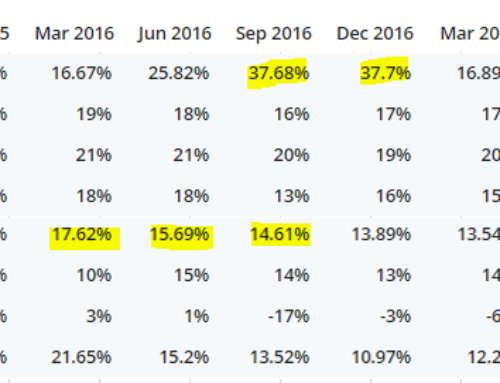I am not a science student. So Clean science, Alkyl Amines, Balaji Amines, Tattva Chintan Pharma chemicals, or any other chemical company, Is just a name for me. I can’t understand what just happened in 2014 that nearly everyone started running behind them. There are many sectors for me to learn, but its looks like out of the world.
This post is like, My journey of learning what they are doing and, at the same time, writing about so many companies. Gopal Kavalireddi wrote one post about the sector. So I am writing this as My journal.
The first question that came before me was, what are they. The name shows me that they are special chemicals. But why this specialty? When I google it, all I get is
Specialty chemicals are particular chemical products that help provide various effects to various industries that they cater to.

I did not get anything. Maybe because I am not a much industry guy. I am more like a financials, Bank, and Insurance person.
I live in an area where agriculture is not something I need to imagine. I saw many types of agricultural work in front of my eyes. In that process, I saw many chemicals used as Insecticides and pesticides. But my best memory with Speciality Chemical was maybe construction chemical. I don’t remember the name but was used to reduce the house’s temperature during Summer. Mix it in color.
I also saw how the small amount of pigment makes my chosen color. As I already mentioned, that paint and cosmetics have their fragrance. I like to use perfume, and so, In fact, they also came into this industry. I also remembered that Textile manufacturing without Speciality chemicals is impossible. Forget it all. The shaving kit of all men has So many specialty chemicals.
So After calculating so many presences of them, I came out that, Some of the categories of specialty chemicals are adhesives, agrichemicals, cleaning materials, colors, cosmetic additives, construction chemicals, elastomers, flavors, food additives, fragrances, industrial gases, lubricants, paints, polymers, surfactants, and textile auxiliaries. While going through many brokerage reports, I learned that these chemical products are also referred to as fine chemicals. Specialty/fine chemicals are thought of as highly innovative. Products are sold for function rather than chemical content. Means doesn’t matter what chemical compound you are getting. You want blue color, and You will receive blue color. If you wish for adhesive, You will get adhesive.
This is not something new for India. Globally, India is the third-largest consumer of polymers, the fourth-largest producer of agrochemicals, and the sixth-largest producer of chemicals. Our leather industry in Kanpur, Kolhapur maybe using So-called specialty chemicals for ages. Our households use Tablesaults for flavors and keeping pickles for a longer time. So why did all of a sudden some companies come into the limelight?
The reason is China.
As China started supporting industry and industrialization, Pollution around Beijing increased.
As thick smog blankets the skies of Beijing, the Communist Party in China begins a serious rethink. For the past three decades, China has grown exponentially on the back of a manufacturing revolution buoyed by a supply of cheap credit, cheap labour, and easy access to raw materials. Toxic factories mushroomed across the country, burning dirty fuel, most notably coal ( China is one of the biggest coal manufacturers), turning northern China’s blue skies into a dark cesspool of carbon and Sulphur dioxide. The accompanying economic boom also resulted in a surge of motorized vehicles, further deteriorating air quality. Pollution masks became a staple among Chinese citizens.
After the public outcry, the government decides to shut down many polluting factories. Many of them were (You guess it right) Chemicals. The chemicals market was already going through a slowdown. So many prefer to shut down or halt for the long term. This presents an opportunity for the Indian Chemical Industry to start chipping away at China’s market dominance slowly. Post the global financial crisis, prices of chemicals witnessed a steep decline after China began flooding the market with cheap exports.
Also, most Indian companies were broadly compliant with emission norms after spending significantly on eco-friendly tech. But this spending made their products less competitive (price-wise) against Chinese exports. So the chemical industry has been plagued with severe problems for much of the last decade. As China Changed its policy, All of a sudden world was searching for new suppliers for many chemicals they generally procure from Chinese companies. Indian companies were already in place for that.
So Take the example of Pharmaceuticals. API, or active pharmaceutical ingredient, is the core part that makes medicine what it is. But That is not all. There is color, fragrance, and texture. There enter Speciality chemical.
Specialty Chemicals can explain very quickly with the help of Agriculture. Nitrogen, Phosphorus, and Potassium are core nutrients for crops. The ways to give are specialty chemicals. India accounts for ~16% of the world’s production of dyestuffs and dye intermediates. Indian colorants industry has emerged as a key player with a global market share of ~15%. The country’s chemicals industry is de-licensed, except for a few hazardous chemicals. India holds a strong position in exports and imports of chemicals globally and ranks 14th in exports and 8th in importance worldwide (excluding pharmaceuticals).
The domestic chemicals sector’s small and medium enterprises are expected to showcase 18-23% revenue growth in FY22, owing to an improvement in domestic demand and higher realization due to high prices of chemicals. The specialty chemicals constitute 22% of India’s total chemicals and petrochemicals market. The need for specialty chemicals will rise at a 12% CAGR in 2019-22. The petrochemicals demand is expected to record a 7.5% CAGR between 2019 and 2023, with polymer demand increasing at 8%. As a result, the Indian agrochemicals market is expected to register an 8% CAGR to reach US$ 3.7 billion by FY22 and US$ 4.7 billion by FY25.
The Indian government recognizes the chemical industry as a critical growth element. It is forecast to increase the share of the chemical sector to ~25% of the GDP in the manufacturing industry by 2025. Under the Union Budget 2021-22, the government allocated Rs. 233.14 crore (US$ 32.2 million) to the Department of Chemicals and Petrochemicals. The Government of India is considering launching a production-linked incentive (PLI) scheme in the chemical sector to boost domestic manufacturing and exports. The government has set up a 2034 vision for the chemicals and petrochemicals sector to explore opportunities to improve domestic production, reduce imports and attract investments. The government plans to implement a production-link incentive system with 10-20% output incentives for the agrochemical sector; to create an end-to-end manufacturing ecosystem through the growth of clusters.
100% FDI is allowed under the automatic route in the chemicals sector with few exceptions, including hazardous chemicals. As a result, total FDI inflow in the chemicals (other than fertilizers) sector reached US$ 18.06 billion between April 2000 and September 2020.



